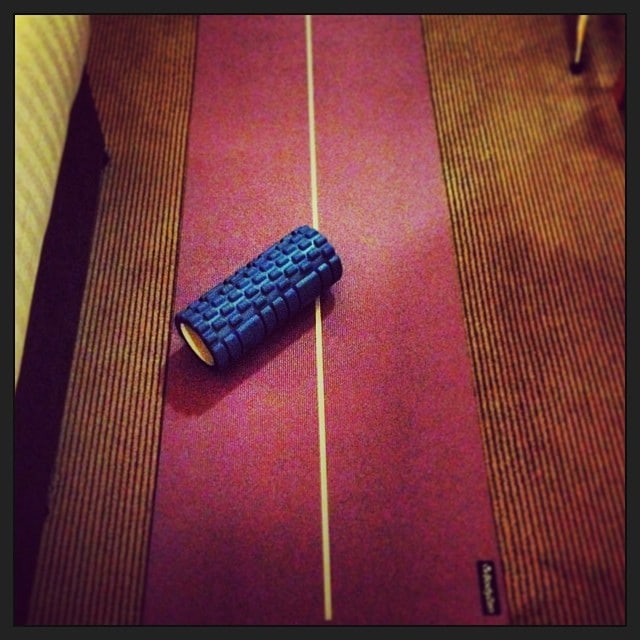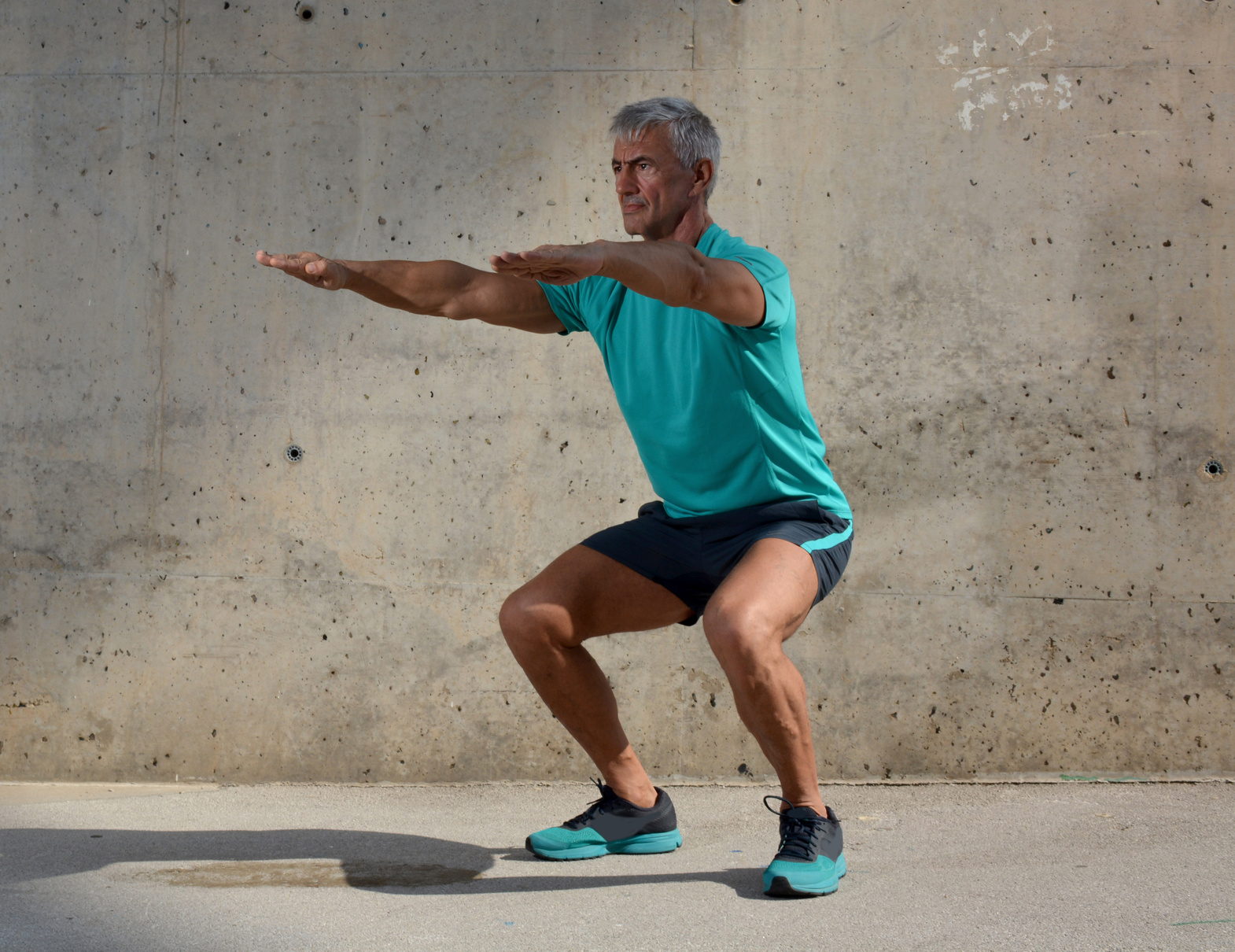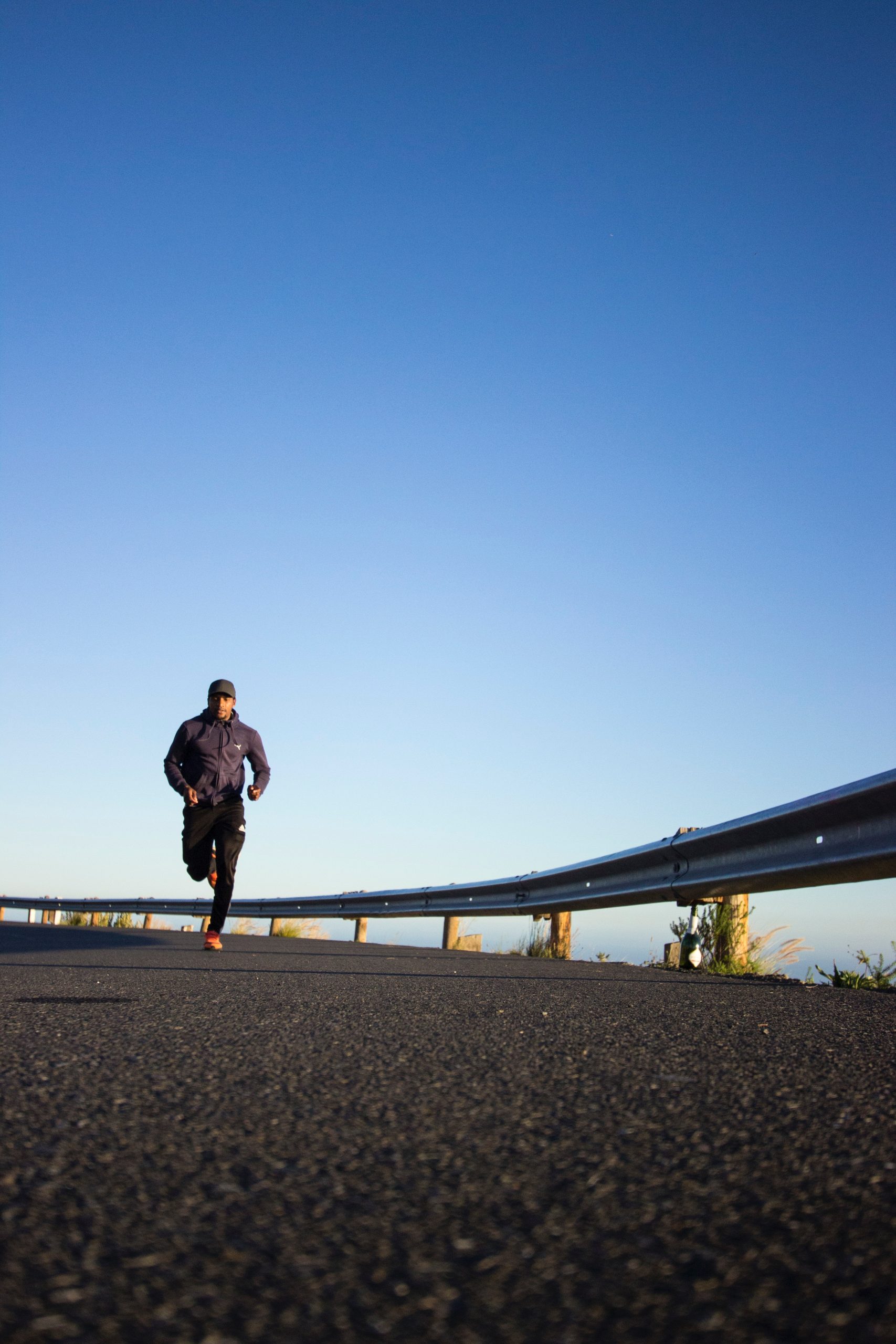Are you ready to dive into the world of foam rolling and discover its magic for your muscles?
Well, you’ve landed in the perfect spot to get started!
Here’s the truth. Not too long ago, I was completely clueless about foam rolling. It wasn’t even on my radar. But then, fate intervened as I found myself knee-deep in the world of p90X2. That’s when I had my first encounter with this strange-looking foam roller, and let me tell you, I gained a new perspective on fitness.
Stretching, mobility, and recovery work took on a whole new meaning. It was like unlocking a secret treasure chest of relief and flexibility. Those tight hamstrings and glutes, oh boy, I had no idea they needed some serious TLC until the foam roller came along.
In simple terms, foam rolling rocks! It’s no gimmick; it actually works wonders for runners like us. But hey, if you’re scratching your head right now, wondering what on earth I’m talking about, don’t worry. I’ve got your back (and your legs) covered!
In this article, I’ll be your foam rolling sensei, guiding you through the ins and outs of this fantastic self-massage technique. You’ll learn the ropes, from the proper techniques to nifty exercises that’ll target those pesky tight spots in your body.
Shall we begin? Let’s do this!
What is Foam Rolling?
Let’s unravel the mysteries of foam rolling, shall we? Picture this: your muscles wrapped up like presents, snugly hugged by the magical layer called fascia. But hey, life happens, and all sorts of stressors, injuries, and the occasional lack of stretching can lead to those sneaky knots, also known as trigger points. These knots are like those unwelcome party crashers, making a grand entrance and disrupting your muscles’ smooth moves.
And guess what? When those knots take center stage, your flexibility and muscle efficiency might do a disappearing act, leaving you feeling like a stiff robot rather than a nimble athlete.
Ouch!
Ignoring these uninvited guests can lead to a dance of chronic pain and potential injuries. But it’s not hopeless—foam rolling to the rescue!
Imagine having a personal masseuse at your beck and call, but without the hefty spa bills. That’s precisely what foam rolling offers! It’s a self-massage technique that’s like hitting the reset button for your muscles. With a trusty foam roller in hand, you’ll bid farewell to those tender and stiff muscles, leaving your fascia happily loose and ready to party.
Sure, it might not be quite as luxurious as a hands-on massage from a pro, but let me tell you, a foam roller is the next best thing, and it won’t break the bank.
Plus, the perks are fantastic—improved range of motion, flexibility, and smoother movement. Talk about getting your groove back! And that’s not all; foam rolling also revs up your blood flow, promoting better muscle recovery.
The Benefits of Foam Rolling For Runners
Regular foam rolling is the secret sauce to your running success!
By giving those hammies some much-needed TLC, you’re actually improving their flexibility. And you know what that means? A fuller range of motion during your runs! That’s right – you’ll be striding and gliding like a gazelle in no time!
But wait, there’s more! It’s not just about your hamstrings, my friends. You see, those tight hamstrings can be sneaky little troublemakers, contributing to lower back discomfort. Ain’t nobody got time for that, right? But fear not, foam rolling to the rescue! By releasing that tension, you might just say goodbye to lower back pain or stiffness. Imagine running with a lightness and freedom you’ve never experienced before!
And here’s another cool benefit – enhanced recovery! You know those intense workouts or long runs that leave your muscles begging for mercy? Well, foam rolling is like giving them a spa day! It increases blood flow, kisses muscle soreness goodbye, and helps you recover like the champion runner you are. It’s like your muscles are getting a standing ovation for their hard work!
But hey, it’s not just about feeling good – it’s about staying injury-free too! And flexible hamstrings are like your body’s best bodyguards against strains and injuries. They’ve got your back, or should I say, your hammies have your back! So you can stay on track with your training and performance goals without any hiccups.
Now, listen up – incorporating hamstring foam rolling into your regular routine is a game-changer. But, and this is important, listen to your body! Don’t go overboard with the foam rolling enthusiasm. If your body gives you any feedback, pay attention and take it easy. And if you’re dealing with specific hamstring injuries or severe pain, don’t be a hero – consult with a healthcare pro or a physical therapist. They’ll give you personalized guidance and support to keep you running strong and happy.
The Benefits of Foam Rolling – Supporting Evidence
Alright, let’s dive into the fascinating world of foam rolling and how it can benefit us runners. But hey, we can’t just take someone’s word for it, right? We need some scientific evidence to back it up!
So, picture this – a group of researchers from the Journal of Sports Rehabilitation (Smith et al., 2020) got curious about how foam rolling could impact hamstring flexibility. They rounded up a bunch of willing participants, including some dedicated runners with tight hamstrings (you know we’ve all been there). And what did they find?
Drumroll, please! Regular foam rolling worked its magic, folks! It significantly increased their range of motion and loosened up those tight hamstrings. That’s music to a runner’s ears, isn’t it?
But wait, there’s more! Another crew of researchers, led by Cheatham et al. (2015), embarked on a grand adventure known as a systematic review. They scoured the vast lands of scientific literature to gather all the knowledge on foam rolling and its effects on muscle soreness and recovery. And what did they discover? Brace yourselves! Incorporating foam rolling into your post-run routine could be a game-changer! It may help you say goodbye to those pesky muscle soreness issues and even speed up your recovery time. Now that’s something we can all get behind!
And here’s the cherry on top – many other studies have also delved into the wondrous world of foam rolling for runners. They’ve explored its impact on performance, injury prevention, and more. You see, we’re not just rolling around on those foam cylinders for fun – there’s some serious science behind it!
So, the verdict is in: foam rolling can be an invaluable tool in a runner’s arsenal. It can help us improve flexibility, reduce muscle tightness, and recover like champions. And you know what? As a runner, that’s music to my ears.
Potential Risks of Foam Rolling For Runners
we all know how fantastic foam rolling can be for our muscles, but just like with anything in life, there are a few things to keep in mind to stay on the safe side. So, here are some cautionary notes and potential risks to consider when diving into the foam rolling game:
First and foremost, don’t get too carried away with it! Too much of a good thing can sometimes lead to not-so-good outcomes. If you go overboard with foam rolling the same muscle group or apply too much pressure, you might end up with some unpleasant results. Think muscle bruising, tissue damage, or even more soreness than you bargained for! Ouch! So, listen to your body and be gentle when necessary.
Next up, if you’ve got any injuries or medical conditions, be cautious! Foam rolling might not be the best idea for everyone in those situations. So, if you’re dealing with any issues, it’s crucial to have a little chat with a healthcare pro or a qualified trainer before rolling away.
And remember, when you’re foam rolling, avoid those joints like the plague! Foam rolling directly over joints can be a recipe for discomfort and potential injury. Yikes! Stick to those soft tissues, like muscles and fascia, and steer clear of bony areas.
Now, here’s a pro tip – foam rolling works best when you warm things up a bit first. So, before diving into your foam rolling adventure, give your muscles a little love with some light dynamic stretching or a short cardiovascular warm-up. It’s like giving them a heads-up that the self-myofascial release party is about to begin!
And hey, if you’re new to foam rolling, don’t go full-on superhero mode right away! Start with some lighter pressure and shorter sessions. As your body gets the hang of it, you can gradually turn up the intensity and duration. It’s like leveling up in a video game – but for your muscles!
If you’re feeling a bit uncertain about your foam rolling techniques or have any concerns, don’t fret! Seek help from a qualified trainer or a trusty physical therapist. They’ll be your guiding stars and ensure you’re rolling your way to glory, safely and effectively.
Foam Rolling For Runners Technique
Although I choose to refer to them as exercises, the focus should be on relaxing your muscles, not flexing them.
Therefore, make sure to relax into each exercise with slow and intentional movements to release and undo the knots.
Here are the 6 guidelines you need for the perfect foam rolling technique.
1. Take Your Time
Some areas might feel tighter than a pair of jeans after Thanksgiving dinner. But hey, that’s all part of the process. If you encounter a bit of discomfort, fear not; you’re on the right track! You’re like a knot-dissolving magician, freeing those muscles from their tangled mess.
2. Roll Slowly
Picture yourself on a leisurely stroll through the park, scanning for the hidden gems. Similarly, roll over those muscles at a relaxed pace, keeping an eye out for the tight and troubled spots. And when you do stumble upon those tender areas, don’t be a scaredy-cat! Take a deep breath, find your Zen, and offer some support with your arms or opposite leg as you apply gentle pressure.
3. Small Areas
Focus on those tiny spots rather than going on a wild rollercoaster ride around your entire muscle. We’re aiming for precision, not a wild goose chase! Precision means less chance of inflammation and more opportunity for your muscles to sing in harmony.
4. Target’ em Right
Make sure to position the roller under the soft tissue you are aiming to loosen and/or release, and then slowly and gently roll your body weight back and forth across the roller while releasing the targeted muscle.
5. The Golden Rule
Roll on the soft tissues, never on the joints.
6. More Water Please
And drink plenty of water when you are done.
Foam Rolling For Runners – The Routine
Try these 8 foam rolling exercises for runners.
This preventative foam rolling routine will take you only 15 to 20 minutes. Do this two to three times a week.
Foam Rolling Exercise – 1. Glutes
Why:
The glutes—gluteus maximus, minimus, and medius— take so much load when running and they are key when it comes to boosting running performance and preventing injuries like IT band syndrome, piriformis syndrome and runner’s knee.
Roll’em Right
Start by lying on the floor, then raise your legs and place them on the roller at the sacrum—the back of your pelvis.
Next, to roll the glutes, slowly twist your lower body to the right, then to the left.
Keep it up for 30-second to one full minute.
Foam Rolling Exercise – 2. IT Band & Outer Thigh
Why:
The IT band is a thick strand of fascia that runs along the thighs.
This vital band stabilizes the knee during running, therefore, if you have a troubled or tight IT band, then you are risking the knee to track out of alignment, which can lead to runner’s knee and other overuse injuries.
Roll’em Right
Lie on your right side (think side plank position) with the foam roller under the right leg and on the outside of your thigh just below your hip.
Next, roll between the bottom of the hips and the top of the knee joint.
Roll for 30 seconds to one full minute, then switch sides.
Foam Rolling Exercise – 3. Quadriceps
Why:
The quads are usually a tight area for runners, and this tightness can tug on your patellar tendon, leading to tenderness and pain around the kneecaps.
Roll’em Right
Lie on your stomach with the foam roller under the front of your thighs.
Next, while holding your body straight, pull with your arms to roll yourself back and forth from hip to mid-thigh—down the length of the quad.
Make sure not to roll over your knee joint.
For more pressure, try bending the knees.
Keep rolling for one to two minutes, and then proceed to the next exercise.
Foam Rolling Exercise – 4. Calves
Why:
Tightness and tension in the calves can lead to sprained ankles and knee pain.
Plus these muscles can be overworked from running too much, so they need as much release and care as possible.
Roll’em Right
Sit on the floor with your right ankle crossed over your left, and place the foam roller under your left calf.
Next, put your hands behind you to raise your body up and support your weight, then start rolling up and down the length of your calf, from the back of your knee to the Achilles’ tendon.
Make sure also to roll along the inside and outside edges of the calf.
Roll for 30 to one full minute, then switch sides.
Foam Rolling Exercise – 5. Adductors
Why:
The adductors are the muscle group that runs along the inner thigh, and they are commonly tight in runners.
Tightness in this area can inhibit proper glute function which can lead to serious overuse injury and stalled performance.
Roll’em Right
Lie facedown with your right leg extended slightly to the side, knee bent, then place the foam roller in the groin area of the extended leg.
Begin with the roller close to your groin and roll down towards your knee.
Keep rolling for 30 seconds to one full minute, then switch sides.
Foam Rolling Exercise – 6. Piriformis
Why:
The piriformis is a small muscle group that runs laterally from the back of the pelvis—aka the sacrum—to the outside of the upper thigh.
The whole region can also get real tight, leading to some serious biomechanical problems.
Roll’em Right
Sit on the floor and place the roller in under the gluteus region—the middle of your glutes, then cross your left leg over your right quad.
Next, to start rolling, lean into one buttock and use tiny movement to roll out the posterior hip, scanning for any troubled spots.
Make sure to use your supporting leg to control (or increase) the pressure.
Foam Rolling Exercise – 7. Lower Back
Why:
The lower back is a troubled area for most people—runners and non-runners alike.
This pain is usually the by-product of high stress, too much sitting, weak and tight back muscles, bad running form and so on.
Plus, making sure that your lower back is flexible can directly affect the mobility and flexibility of your glutes, enhancing performance as well as warding off a lot of trouble and injury.
Roll’em Right
Sit on the floor, raise your pelvis and place the foam roller directly in the small of your lower back.
Next, while using your hands for support, roll up and down the length of the lower back.
Please be careful with your spine.
Roll for one to two minutes, then proceed to the next exercise.
Foam Rolling Exercise – 8. Hamstrings
Why:
As a runner, the hamstrings withstand a lot of stress, and in case of the absence of a regular stretching routine, these important muscles can become chronically tight, which can lead to a host of running injuries.
Plus, rolling your hamstrings can prevent lower back pain as well.
Roll’em Right
Sit on a foam roller with your legs outstretched, and roller placed under your right thigh.
Next, place your hands behind you for support, then slowly roll back and forth from the base of your glutes to the top of your knees, taking your time to any troubled spot.
Make sure to turn your feet in and out to work different parts and angles of your hamstrings.
Roll for one minute then switches sides.














